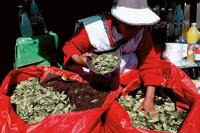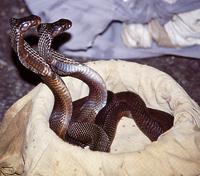Honey and honey poisons

The kingdom of plants is undoubtedly the kingdom of poisons. There are countless plants that can kill man. However, plants are food for the human being, so the human being has tried almost all the plants of his environment as edible. Of course, in the test he has also ingested toxic species and learned their influence.
These trials were greatly exploited by man. Thus, he discovered that the plant is also the medicine paradise. And the sorcerers of old used mostly plants and their roots or seeds to cure the sick, as well as to feel good or to contact the gods. It is unknown when belladonna and opium or sleep grass are known, and they are not edible: belladonna ( Atropa bella-donna) produces hallucinations and opium grass ( Papaver somniferum) is sedative.
Morphine comes out of the optional ear. And what is morphine, medicine, drug, or poison? All answers are correct depending on the use. From a plant point of view, the border between poison and medicine is negligible. Morphine is analgesic and somnifera, therefore, the drug. It is also taken for pleasure, so it is also a drug. But, in essence, morphine is the most potent toxin of opium herb, which can cause serious poisoning, it is poison.

Morphine is an alkaloid. And it seems that one in ten plants has some alkaloid. It is not clear what these compounds have plants; some say they serve as protection, others act as hormones. In any case, the question is that man has learned to take advantage of plant alkaloids.
Ephedrine, codeine, and other compounds used in medicine are alkaloids or plant derivatives.
However, alkaloids are not the only toxins that plants present. Some vegetable glycosides, tannins, saponins... can also be poisons harmful to humans, but the key is to the extent. Paracelsus said long ago: “dose makes poison”, that is, poisons are overtaken substances. The secret is therefore to know the size of each substance. And for that there is no law.
Poisons on the plate
According to Paracelsus, many of the substances we need to live become poisons, such as oxygen, but at the other end 100 nanograms of the most powerful toxin, that is, 0.0001 milligrams, are enough. This toxin is the neurotoxin produced by the bacterium Clostridium botulinum. This bacteria grows in non-sterile food preserves, blocking neurotransmitters and paralyzing all muscles in the body.

It has been essential to know the mechanism that follows botulinum toxin in the body. This allows treating many diseases, especially those related to muscles and spasms. The first injections of botulinum toxin were used against strabismus in 1981 and from there its use has been expanded. Currently they are also used in cosmetics to soften wrinkles and rejuvenate the cervical area — botox. It is obvious how far you can get from a toxin that causes serious poisoning.
The mechanisms of toxins are increasingly known, but this does not prevent poisonings and most poisonings occur on the table, with food. Many of them are unforeseen, such as salmonellosis, enteritis... But floods are also common: eating a toxic mushroom in the edible, or not properly preparing a fish.
It is curious the case of the fish Fnosotros, since the temptation to eat a delicious bite takes people to the hospital. Fugú ( Fgu rubripes, sea fish like the globopez) is a food very appreciated in Japan, but with a poison called tetrodoxin, which if not cleaned and properly prepared is very dangerous. This fish is only eaten in restaurants and is not prepared by anyone: the cook must learn to cut the leak properly.

According to statistics, about two hundred people are poisoned every year after the flight in Japan. For half of them die, some as soon as they fill the belly and rise from the table, 20 minutes and others before eight hours.
In Basque gastronomy there is no known escape, but they eat, for example, soaps. And they also have poison: you have to be careful when fishing a soap so as not to punch the punch because it is very painful.
Both the leak and the soap use poison for defense. In fact, one of the functions of poisons is to protect yourself from enemies. But animals not only serve for defense, but also for hunting. Some snakes, for example, use the prey to paralyze it and, in addition to immobilizing the prey, the poison begins to digest the prey before it swallows.
Better know the enemy
Poisonous snakes exist all over the world and every species of snake has its poison. Moreover, the composition and quantity of poison of a certain snake is variable, not only in snakes, but also in the other poisonous beings, influenced by the age and sex of the animal and other factors such as seasons of the year.

Snake venom has long been investigated, especially in search of antidotes. The venom of snakes consists of enzymes and other proteins, which have developed modified by basic proteins. It seems that the transformation of proteins from different organs of the body was enough to totally alter its bioactivity.
Well, researching these poisonous proteins can be used for the benefit of man. On the one hand, anti-poison antidotes are obtained. On the other hand, it is about obtaining proteins with another bioactivity, that is, proteins that act on specific organs for use as drugs. Undoubtedly, one of the strongest arms of toxicology is in pharmacology.
Toxicology had a close relationship with pharmacology from its origin. In fact, Mateo Orfila worked with pharmacological methods and Orfila is the father of toxicology. Orfila Maón, dean of the Paris School of Medicine of the 19th century, was born. At the beginning of the 20th century. Among other things, he worked on poison classification and studied methods to identify poisons.

The main objective of these initial investigations was the search for antidotes, but also the need to investigate the murders, with too many unsolved crimes, and forensic toxicology acquired great strength. With poison the perfect crime could be achieved at one time, but the thing changed a lot: as analysis techniques developed, the murdered corpses were perceived by poisons. Therefore, many murders and murderers were exposed.
It seems that poisoning crimes have declined a lot in the last two centuries, it seems that the fear of running over discards the murderer. But that doesn't mean there is less poisoning. Only changes have been made: these are poisonings that were previously unknown, mainly related to pollutants or medicines.
Therefore, it seems that poisons will remain protagonists, both natural and man-made.
Do not resist the temptation of mushrooms

Mushrooms are really tempting. They can be the sweetest dishes, but they are also able to kill them. Therefore, it is essential that you know with certainty what species the mushroom is ingested.
The mycologists of Aranzadi, Xabier Laskibar and Pedro Arrillaga admit that they began to look at mushrooms by the stomach. Gradually, mycology became a hobby, and today they are experts in differentiating species of mushrooms. Therefore, when people sick with mushrooms arrive at the Gipuzkoa Hospital, they come to him to identify as soon as possible the species causing the poisoning.
In this sense, the Gipuzkoa Hospital is one of the most advanced in the Spanish state, along with that of Barcelona and Pamplona. In other hospitals they have to take samples, send them to Barcelona and wait for the result, which of course delays the determination of the appropriate treatment.
According to Javier and Pedro, most of the intoxications they see in San Sebastian are caused by Entoloma lividum. Its appearance and aroma are beautiful and very similar to the spring mushroom ( Callocybe gambosa), although it normally grows in autumn. However, it sometimes grows in spring, and that's when you'd eat them: people eat in the so-called spring siza, and the stomach and intestine start dancing.
The severity of poisoning varies from person to person depending on their health, for example, and the amount of mushrooms ingested. E. lividum can cause serious intoxication, but it is not the only one, since in the Basque Country there are other species such as Amanita phalloides (hepatotoxic mushroom) and some haemotoxic species.
The phalloides amanita can be deadly — just eat a single specimen. It contains amatoxins that attack liver cells (hepatocytes). If diagnosed before late, you have treatment. Medicines that strengthen the membrane of liver cells are used.

Haemotoxic mushrooms destroy blood cells. Paxillus involutus, for example, promotes immune hemolysis: antibodies are formed against mushroom antigens, which are those that stick to red blood cells.
Some species of mushrooms have their own toxic substances and accumulate contamination of the environment in which they grow. This may involve the presence of toxic substances from outside as heavy metals. In it mushrooms of the genus Agaricus are skilled.
On the other hand, it should be noted that mushrooms are difficult to digest by themselves and that, in addition, in large quantities, some edible species can cause poisoning. In addition, some people suffer intolerance to all mushrooms. Therefore, mycologists recommend eating few mushrooms and only the known, freshly taken and well made.
However, before any doubt with a mushroom, keep the temptation. And if not, go to Aranzadi: at the time of mushrooms, they have the doors open in the towers Arbide (Miramon de Donostia), on Mondays and Tuesdays, from 7 to 10 in the afternoon, where they will help you identify the species of mushrooms you have received and inform you of whether they are edible or not.
Poison to kill the enemy
Poisoning has been plentiful in the power struggle, the last year that dioxins poisoned the opposition of Justxenko, Ukraine. Throughout history they have been well-known poisoners and poisonings, such as the Borgg, who were good poisoners.

The Borgiarras used arsenic to eliminate ‘obstacles’. Arsenic has no taste or smell, so it is difficult to perceive. But drinking water instead of wine would save the poor who would die because arsenic does not melt well in the water (you see), but in the wine it dissolves perfectly.
As for poisoning, or rather poisoning attempts, Rasputin must not be forgotten. In the court of Tsar Nicholas II, Rasputin had more power than those around him wanted, and eleven times attempted to kill him. They got it in the last session. They used cyanide, but did not believe that the man died poisoned with cyanide: they had to kill the knife.
For a moment they thought that the rasputin could be immortal. However, the murderers, Prince Jusopov and two other friends, did not know that along with the poison they also gave the antidote to Rasputin: delicious cakes. Its sugar (glucose) reacted with cyanide forming a harmless compound. Good surprise!





